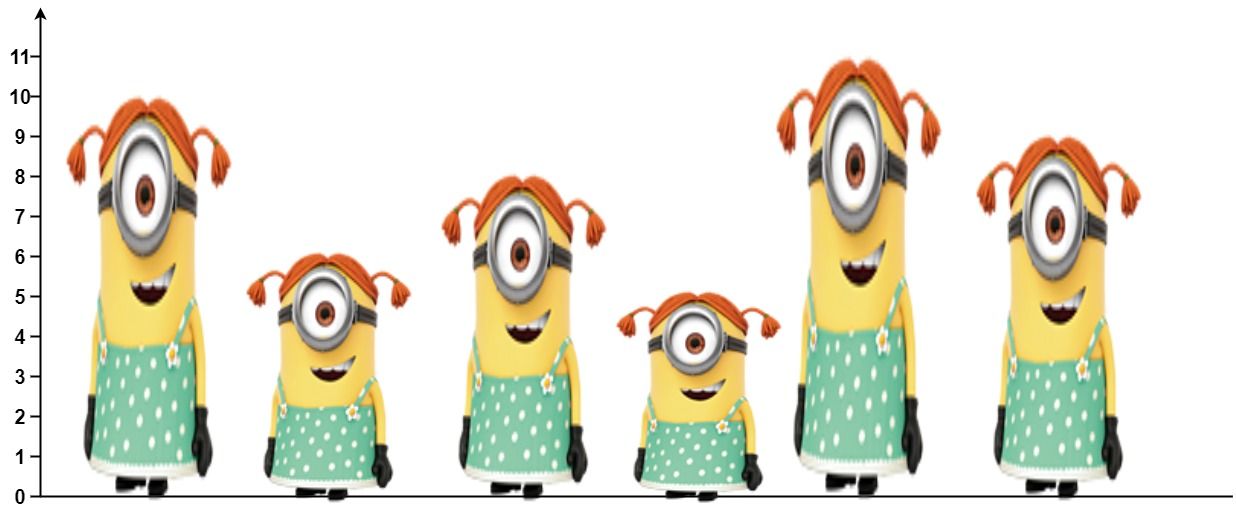There are n people standing in a queue, and they numbered from 0 to n - 1 in left to right order. You are given an array heights of distinct integers where heights[i] represents the height of the ith person.
A person can see another person to their right in the queue if everybody in between is shorter than both of them. More formally, the ith person can see the jth person if i < j and min(heights[i], heights[j]) > max(heights[i+1], heights[i+2], ..., heights[j-1]).
Return an array answer of length n where answer[i] is the number of people the ith person can see to their right in the queue.
Example 1:
Input: heights = [10,6,8,5,11,9] Output: [3,1,2,1,1,0] Explanation: Person 0 can see person 1, 2, and 4. Person 1 can see person 2. Person 2 can see person 3 and 4. Person 3 can see person 4. Person 4 can see person 5. Person 5 can see no one since nobody is to the right of them.
Example 2:
Input: heights = [5,1,2,3,10] Output: [4,1,1,1,0]
Constraints:
n == heights.length1 <= n <= 1051 <= heights[i] <= 105- All the values of
heightsare unique.
Monotonic stack.
class Solution:
def canSeePersonsCount(self, heights: List[int]) -> List[int]:
n = len(heights)
ans = [0] * n
stack = list()
for i in range(n - 1, -1, -1):
while stack:
ans[i] += 1
if heights[i] > stack[-1]:
stack.pop()
else:
break
stack.append(heights[i])
return ansclass Solution {
public:
vector<int> canSeePersonsCount(vector<int>& heights) {
int n = heights.size();
vector<int> ans(n);
stack<int> stk;
for (int i = n - 1; i >= 0; --i) {
while (!stk.empty()) {
ans[i]++;
if (heights[i] <= stk.top()) break;
stk.pop();
}
stk.push(heights[i]);
}
return ans;
}
};function canSeePersonsCount(heights: number[]): number[] {
const n = heights.length;
const ans = new Array(n).fill(0);
const stack = [];
for (let i = n - 1; i >= 0; i--) {
while (stack.length !== 0) {
ans[i]++;
if (heights[i] <= heights[stack[stack.length - 1]]) {
break;
}
stack.pop();
}
stack.push(i);
}
return ans;
}impl Solution {
pub fn can_see_persons_count(heights: Vec<i32>) -> Vec<i32> {
let n = heights.len();
let mut ans = vec![0; n];
let mut stack = Vec::new();
for i in (0..n).rev() {
while !stack.is_empty() {
ans[i] += 1;
if heights[i] <= heights[*stack.last().unwrap()] {
break;
}
stack.pop();
}
stack.push(i);
}
ans
}
}/**
* Note: The returned array must be malloced, assume caller calls free().
*/
int* canSeePersonsCount(int* heights, int heightsSize, int* returnSize) {
int* ans = malloc(sizeof(int) * heightsSize);
memset(ans, 0, sizeof(int) * heightsSize);
int stack[heightsSize];
int i = 0;
for (int j = heightsSize - 1; j >= 0; j--) {
while (i) {
ans[j]++;
if (heights[j] <= heights[stack[i - 1]]) {
break;
}
i--;
}
stack[i++] = j;
}
*returnSize = heightsSize;
return ans;
}
